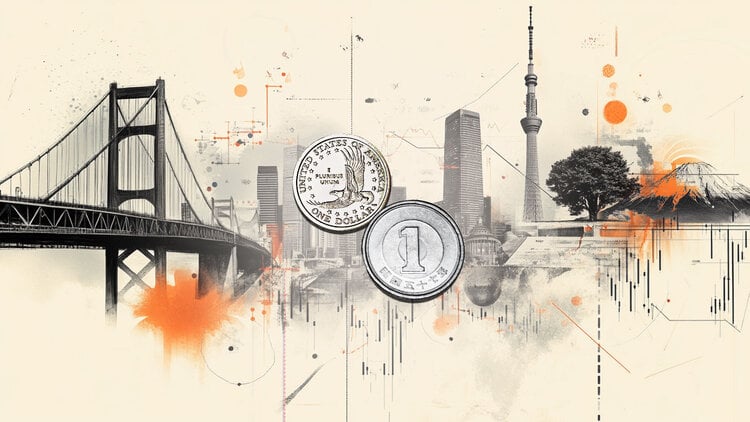- The US dollar gained ground on Wednesday and is trading strongly against its main rivals.
- Negative market sentiment caused the dollar to gain interest.
- September building permits in the United States exceeded expectations. The housing starts disappointed.
- Investors await the Fed’s Beige Book report, which will be released later in the session.
He US dollar (USD) measured by the Dollar Index (DXY) rose towards 106.60 and appears to be building strong support around the 20-day SMA. Early in the session, mixed housing data was released in the US and investors are awaiting the Federal Reserve’s Beige Book to continue placing their bets on the US central bank’s upcoming monetary policy decisions. Several Fed officials will also be on the microphones during the American session.
U.S. economic activity remains strong, as revealed by the latest reports, including S&P Global PMIs, industrial production and retail sales. However, the Beige Book offers a clearer view of the current economic situation in the United States through interviews with key business contacts, economists and market experts gathered by each of the 12 Federal Reserve districts.
Daily summary of market movements: The Dollar gains ground and markets are cautious awaiting the Fed’s Beige Book
- The US Dollar DXY rose near 106.60, with daily gains of 0.40%.
- September building permits in the United States stood at 1.475 million, up from 1.45 billion but still below the previous 1.541 million.
- Home construction starts rose in September but less than expected, standing at 1,358 million, below the 1,380 million but above the latest reading of 1,269 million.
- The Fed’s Beige Book will offer a clearer picture of economic activity and the state of the labor market in the United States.
- Meanwhile, US yields rise slightly, with 2-, 5- and 10-year Treasury bond yields rising to 5.21%, 4.92% and 4.91% respectively.
- According to CME’s FedWatch tool, the odds of a 25 basis point hike at the December meeting rose to nearly 42%.
Technical Analysis: Dollar Index bulls enter the scene and battle at the 20-day SMA
The US Dollar Index DXY managed to jump back above the 20-day SMA of 106.25, and technical indicators gained some ground on the daily chart on Wednesday. In a broader context, the index could be said to remain in an overall uptrend, holding above the key 200- and 100-day simple moving averages (SMA).
With the Relative Strength Index (RSI) pointing north above 50 and the Moving Average Divergence (MACD) printing lower red bars, both are sending slightly supportive signals.
Supports: 106.20 (20-day SMA), 106.00, 105.80.
Resistances: 106.70, 107.00, 107.30.
Risk Sentiment FAQ
What do the terms “risk aversion” and “risk sentiment” mean in financial markets?
In the world of financial jargon, the two widely used terms “risk appetite” and “risk aversion” refer to the level of risk that investors are willing to bear during the reference period. In a market “risk appetite” risk”, investors are optimistic about the future and are more willing to buy risky assets. In a “risk averse” market, investors start to “play it safe” because they are worried about the future and therefore They buy less risky assets that are more likely to yield profits, even if they are relatively modest.
What are the key assets to follow to understand risk sentiment dynamics?
Typically, during periods of “risk appetite”, stock markets rise, and most commodities – except gold – also appreciate as they benefit from positive growth prospects. The currencies of countries that are large exporters of raw materials strengthen due to increased demand, and Cryptocurrencies rise. In a “risk-off” market, Bonds – especially major government bonds – rise, Gold shines and safe-haven currencies such as the Japanese Yen, Swiss Franc and US Dollar benefit.
Which currencies strengthen when the sentiment is “risk appetite”?
The Australian dollar (AUD), the Canadian dollar (CAD), the New Zealand dollar (NZD) and minor currencies such as the ruble (RUB) and the South African rand (ZAR) tend to rise in markets where there is an “appetite for risk.” This is because the economies of these currencies rely heavily on commodity exports for their growth, and these tend to rise in price during periods of “risk appetite.” This is because investors anticipate higher demand for raw materials in the future due to increased economic activity.
Which currencies strengthen when sentiment is “risk averse”?
The major currencies that tend to rise during periods of “risk aversion” are the US Dollar (USD), the Japanese Yen (JPY) and the Swiss Franc (CHF). The Dollar, because it is the world’s reserve currency and because in times of crisis investors buy US public debt, which is considered safe because it is unlikely that the world’s largest economy will go into default. The Yen, due to the increase in demand for Japanese government bonds, since a large proportion is in the hands of domestic investors who are unlikely to get rid of them, even in a crisis. The Swiss franc, because strict Swiss banking legislation offers investors greater capital protection.
Source: Fx Street
I am Joshua Winder, a senior-level journalist and editor at World Stock Market. I specialize in covering news related to the stock market and economic trends. With more than 8 years of experience in this field, I have become an expert in financial reporting.







